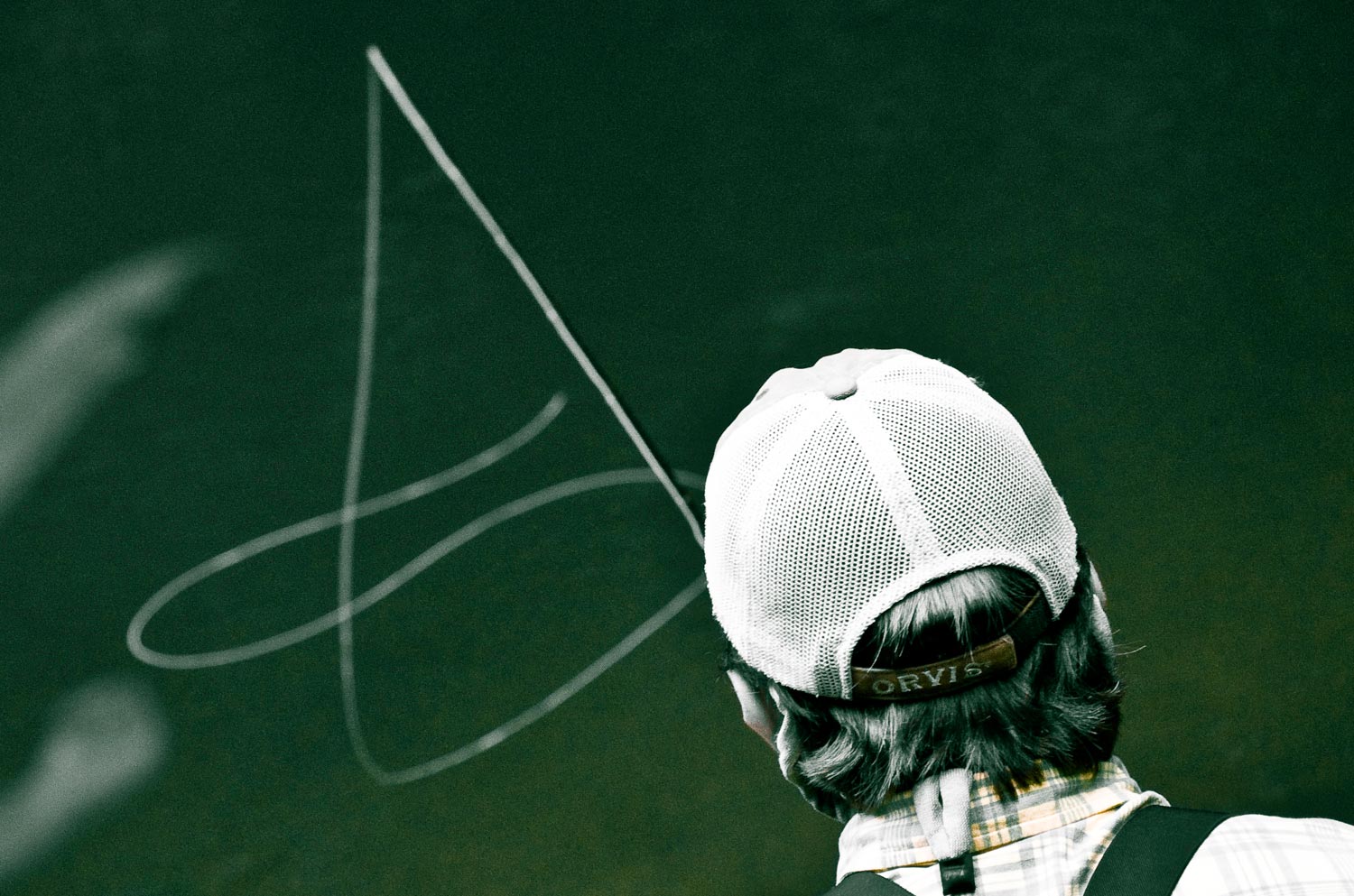One of the most critical techniques of fly fishing that anglers often lack knowledge in, is understanding how to properly mend fly line during the drift.
If I tallied up all the time I spend each day instructing clients on various fly fishing techniques, teaching the art of mending fly line would easily rank number one on the list. I bet I say the word “mend” a thousand times a day. It’s not that difficult to mend fly line, all it takes is a little practice and time on the water to get the hang of it. In my opinion, it’s much easier to learn how to mend than the art of fly casting. The main reason mending takes so long for fly anglers to master is because the timing of the mend, the direction of the mend and the size of the mend can change from one presentation to the next. Two of the biggest mending problems I see on the water is bad technique and mending fly line too much during the drift. When mending is done correctly, you usually only need one or two mends per drift to get the job done.
Despite a lot of fly fishing literature found in books and on the internet, you don’t always want to mend the fly line immediately after the fly lands on the water. Sometimes, it will serve you much better if you wait a couple seconds to mend after your drift has begun. An example of this would be when you’re making a medium to long distance quartering presentation across and upstream of you. In this situation, if you first bring in some fly line slack with a few strips as you’re watching the fly drifts towards you, and then follow that up with a well timed mend (when it gets within your range), it should allow you to reposition all of the fly line on the water, and set you up for a drag-free drift for the remainder of the drift. Keep in mind that the different currents that you’re casting across with your fly line will ultimately determine when it will be the correct time for you to mend. The casting angle has a lot to do with mend timing as well.
Knowing when to strip and wait for the mend, and when to mend right away is what sets apart the veterans from the rookies.
The place where a lot of anglers go wrong is when they don’t pay enough attention to their mending technique. I see a lot of half-hearted mending on the water, and most of that is do to anglers worried about picking up or moving their fly on the water during their mend. If you don’t mend hard enough or don’t have your rod tip travel in the proper direction and shape, you’ll usually end up only mending half the fly line needed. If you’re going to mend your fly line, make sure you first are pointing your rod tip in-line with the fly line you want to mend (Sometimes this means moving your rod tip away from your fly), and then make sure you follow that up with raising your rod tip high enough in the air when you make your “n” shape or backwards “n” shape mend.
It’s important to understand that the more you mend your fly line during your drift, the higher the chances you’ll be imparting drag on your flies or moving them out of the strike zone. And that can keep anglers from getting a ton of bites throughout the day. A good mending exercise to practice is picking out a drift you want to make, and experiment with mending the fly line at different times. Pay attention to how it effects your drift and how many mends it takes for you to complete the drift. Usually, the drift that requires the least amount of mends is the one you want to be using for that specific spot, but by all means, mend if it is called for during the drift. I will be following this post up with some mending videos in the coming weeks. For now, just start paying close attention to your mending when you’re on the water. Some fly fishing technique is best explained in video where you can clearly visualize the instruction and the execution.
I’d also like to recommend checking out a mending primer on Midcurrent, that was written by Phillip Monahan. He did a very good job explaining the proper fly line mending techniques and has great illustrations to back them up.
Keep it Reel,
Kent Klewein Gink & Gasoline www.ginkandgasoline.com hookups@ginkandgasoline.com Sign Up For Our Weekly Newsletter!
Sign Up For Our Weekly Newsletter!

